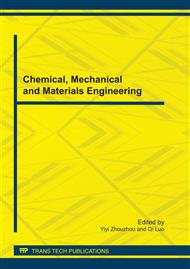p.1
p.7
p.13
p.19
p.25
p.29
p.35
p.43
Probability Boxes and DS Structures’ Research Prospects in the Mechanical Fault Signals Data Fusion
Abstract:
In the traditional machinery fault diagnosis, the feature extraction leads information loss and the different information sources’ space-time registration is a difficult problem. The Probability boxes and Dempster-Shafer Structure Theory can provide a new way to solve above difficulties. This theory has a large advantage in solving uncertainties. It can be adapted for the inconstant machinery environment. In this paper, firstly the concepts of this theory are summarized and some methods of getting probability boxes are given. Secondly the method’s feasibility is discussed. Finally some promising research directions of this theory’s applications in the machinery fault diagnosis are advanced.
Info:
Periodical:
Pages:
19-24
Citation:
Online since:
July 2011
Authors:
Price:
Сopyright:
© 2011 Trans Tech Publications Ltd. All Rights Reserved
Share:
Citation:


